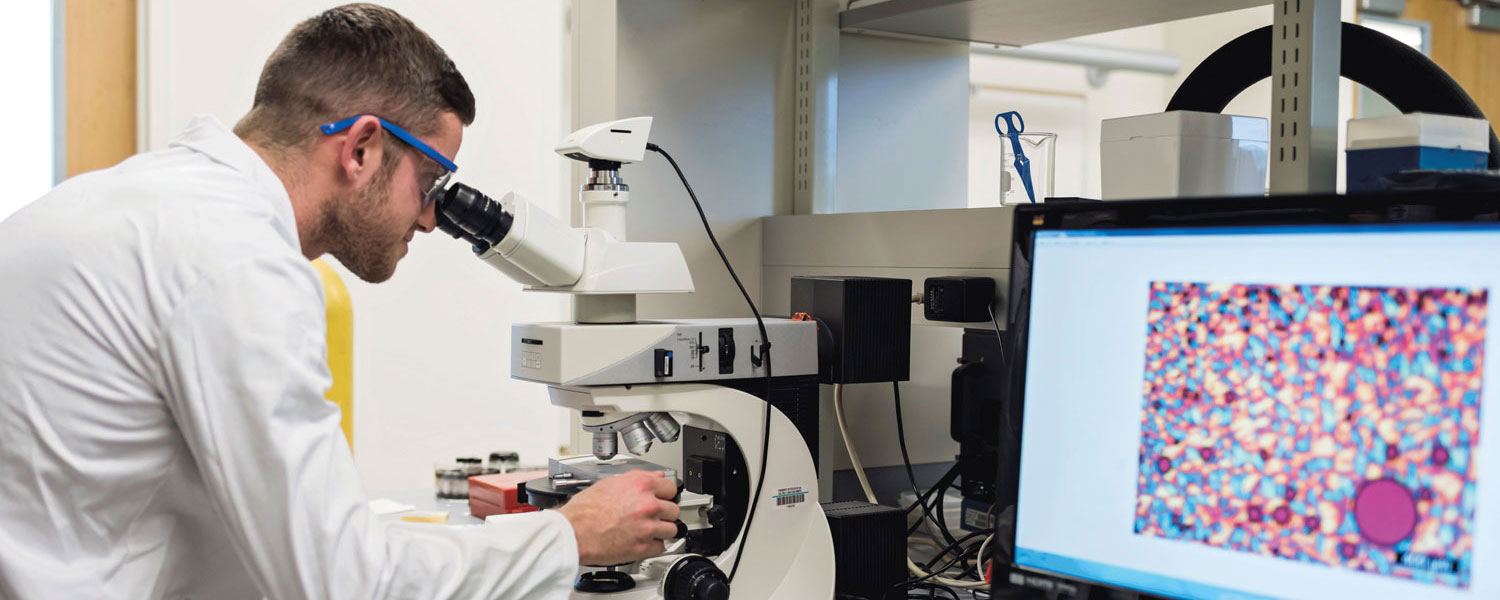cal poly news
Printing the Future
By Rachel Henry

The answer to the pressing environmental problems of drought and clean energy might come from an unlikely source: the printing press. In a unique collaboration between chemistry professor Shanju Zhang and graphic communication professor Xiaoying Rong, Cal Poly students are producing solar cells and desalination membranes with the same type of press that prints magazines.
The key to these projects is polymers — compounds made of long chains of carbon molecules that are used to make thousands of products, from plastic water bottles to paint. Zhang and his students are creating polymers that flow like ink and can be screen printed.
“This printing process can be automated on a press for low-cost mass production,” said Rong. That means that solar cells and desalination membranes could be produced inexpensively in much the same way as newspapers.
One of the challenges in both projects is alignment at the nanoparticle level. For the water and electrons to flow, the nanoparticles need to face the same direction. Printing offers an inexpensive, scalable method to produce this alignment without developing any new technology.
“Polymer science hasn’t yet developed an efficient way to produce the vertically aligned photovoltaic elements needed to increase efficiency,” said Zhang. “New chemical materials could help reduce the amount of energy needed for desalination, but we would still need effective processing methods. Our collaboration has the potential to close these gaps.”
Zhang’s students have been involved in the realworld research project from day one. They make the materials, use advanced instruments, and print the film. Along the way, they learn lab and problem-solving skills that are valuable for future work in industry or graduate education.
“This type of collaboration reinforces the commercial applications of high-tech research,” Zhang said. “Students are highly motivated to work on these projects because they can see the application of what they’re doing.”
Though the products are still in the development stage, the researchers are excited about the possibilities. “These projects bring together material development on the science side and applied technologies on the printing side to develop low-cost, high-throughput products,” said Rong. “There’s a lot of potential in this area and a lot of need.”





